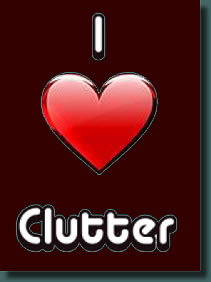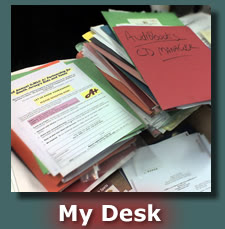I recently had the privilege of keynoting the Access Services conference on November 12, 2015 (slides available on slideshare.) I offered to put together a bibliography of the articles and research that informed some of my points around emotional and social intelligence, mindfulness, happiness, health, stress, and effectiveness. Here it is!
This bibliography skews more towards “popular” books, articles, and resources as opposed to clinical studies and academic research. This was a conscious choice I made because so many of the “popular” articles contain links and references to the harder science, and I thought this approach would be of more value to the layperson or casual reader, while still providing a pathway into the research for those so inclined to dive deeper.
If there are books, articles, videos, workshops, or other resources that have been helpful to you, please share your recommendations in the comments section.
Thank you and enjoy!
Articles and Blog Posts
- 3 Reasons Everyone At Google Is Meditating. By Drake Baer. Fast Company. http://www.fastcompany.com/3013333/unplug/3-reasons-everyone-at-google-is-meditating.
- 4 Things Psychologists Know That You Should Know Too. By Jonice Webb PhD. Psych Central. http://blogs.psychcentral.com/childhood-neglect/2014/11/4-things-psychologists-know-that-you-should-know-too/.
- 5 Common Misconceptions About Meditation. [Google’s] Search Inside Yourself Leadership Institute. https://siyli.org/5-misconceptions-meditation
- 5 Reasons Why You Should Take a Nap Every Day. By Michael Hyatt http://michaelhyatt.com/why-you-should-take-a-nap-every-day.html
- 20 Scientific Reasons to Start Meditating Today. By Emily Seppala. Psychology Today, September 11, 2013. https://www.psychologytoday.com/blog/feeling-it/201309/20-scientific-reasons-start-meditating-today.
- At Aetna, a C.E.O.’s Management by Mantra. By David Gelles. New York Times, February 27, 2015. http://www.nytimes.com/2015/03/01/business/at-aetna-a-ceos-management-by-mantra.html.
- Being Happy at Work Matters. By Annie McKee. Harvard Business Review, November 14, 2014. https://hbr.org/2014/11/being-happy-at-work-matters.
- Change and (Positive) Emotions. Leadership & Learning Blog, by Kevin Eikenberry. http://blog.kevineikenberry.com/leadership-supervisory-skills/change-and-positive-emotions/
- Compassion In Business Benefits Employers And Employees, Workplace Stress Research Shows. By Emma Seppala. http://www.huffingtonpost.com/2013/08/06/compassion-in-business-makes-sense_n_3684661.html.
- Connect To Thrive: Social Connection Improves Health, Well-Being & Longevity. By Emma Seppala. http://www.emmaseppala.com/connect-to-thrive-social-connection-improves-health-well-being-longevity/ .
- Developing resonant leaders through emotional intelligence, vision and coaching. By Richard E. Boyatzis, Melvin L. Smith, Ellen Van Oosten, Lauris Woolford. Organizational Dynamics (2013) 42, 17—24.
- Eight weeks to a better brain: Meditation study shows changes associated with awareness, stress. Harvard Gazette, January 21, 2011. http://news.harvard.edu/gazette/story/2011/01/eight-weeks-to-a-better-brain/
- The Emotional Impulses That Poison Healthy Teams. By Annie McKee. https://hbr.org/2015/07/the-emotional-impulses-that-poison-healthy-teams. Accessed 11/21/15.
- Emotional Intelligence Is critical to Good Leadership. By Hayden Richards. http://www.intelligenthq.com/intelligence/emotional-intelligence-impacts-organizational-climate.
- The Hard Data on Bing a Nice Boss. By Emma Seppäla, Harvard Business Review. November 24, 2014. https://hbr.org/2014/11/the-hard-data-on-being-a-nice-boss.
- Happiness & health. Harvard Public Health: Winter 2011. http://www.hsph.harvard.edu/news/magazine/happiness-stress-heart-disease/.
- Harvard unveils MRI study proving meditation literally rebuilds the brain’s gray matter in 8 weeks. http://www.wildmind.org/blogs/news/harvard-unveils-mri-study-proving-meditation-literally-rebuilds-the-brains-gray-matter-in-8-weeks.
- Hit the Reset Button in Your Brain. By Daniel Levitin. New York Times, 8/9/14. http://www.nytimes.com/2014/08/10/opinion/sunday/hit-the-reset-button-in-your-brain.html.
- How chronic stress predisposes brain to mental disorders. Science Daily. http://www.sciencedaily.com/releases/2014/02/140211153559.htm.
- How Mindfulness Can Help Your Creativity. By George Hofmann. Psych Central. http://psychcentral.com/blog/archives/2013/10/05/how-mindfulness-can-help-your-creativity/.
- How Mindfulness Meditation Is Transforming Our Society. By Charles Francis. Huffpost Living. http://www.huffingtonpost.ca/charles-a-francis/mindfulness-meditation-revolution_b_7766868.html.
- How Stress Changes the Brain. By Carolyn Gregoire. http://www.huffingtonpost.com/2014/11/18/brain-stress_n_6148470.html.
- How Stress Tears Us Apart: Enzyme attacks synaptic molecule, leading to cognitive impairment. Science Daily. http://www.sciencedaily.com/releases/2014/09/140918091418.htm.
- How to Grow Stronger Without Lifting Weights. By Clayton Mosher. Scientific American, December 23, 2014. http://www.scientificamerican.com/article/how-to-grow-stronger-without-lifting-weights/
- How Walking in Nature Changes the Brain. By Gretchen Reynolds. New York Times Wellness Blog. July 22, 2015. http://well.blogs.nytimes.com/2015/07/22/how-nature-changes-the-brain.
- The ideal self as the driver of intentional change. Richard E. Boyatzis and Kleio Akrivou. Journal of Management Development. Vol. 25 No. 7, 2006. pp. 624-642.
- In Silicon Valley, Meditation Is No Fad. It Could Make Your Career. By Noah Shachtman. Wired Magazine. 06/18/13. http://www.wired.com/2013/06/meditation-mindfulness-silicon-valley.
- Is Attention the Secret to Emotional Intelligence? {Intervew with Daniel Goleman) By Jason Marsh, Berkley’s Greater Good Science Center Blog, November 14, 2013 http://greatergood.berkeley.edu/article/item/is_attention_the_secret_to_emotional_intelligence.
- Just fifteen minutes of mindfulness meditation can improve your decision making.
British Psychological Society Research Digest. http://digest.bps.org.uk/2014/01/just-fifteen-minutes-of-mindfulness.html. - Man In Nature: How Going to the Woods Strengthens Your Brain Power. By Robert Locke. http://www.lifehack.org/305649/man-nature-how-going-the-woods-strengthens-your-brain-power.
- Meditation the new tool to reach peak performance. By Alex Hutchinson. The Globe and Mail, November 9, 2014. http://www.theglobeandmail.com/life/health-and-fitness/fitness/meditation-the-new-tool-to-reach-peak-performance/article21504223/?click=sf_globe.
- “Mind the Trap”: Mindfulness Practice Reduces Cognitive Rigidity. By Jonathan Greenberg, Keren Reiner, Nachshon Meiran. PLoS One. 2012;7(5). http://journals.plos.org/plosone/article?id=10.1371/journal.pone.0036206.
- Mindfulness Mitigates Biases You May Not Know You Have. By Nicole Torre. Harvard Business Review. December 24, 2014. https://hbr.org/2014/12/mindfulness-mitigates-biases-you-may-not-know-you-have.
- Mindfulness, Hope and Compassion: A Leader’s Road Map to Renewal. By Annie McKee, Frances Johnston, Richard Massimilian. Ivey Business Journal, May / June 2006. http://iveybusinessjournal.com/publication/mindfulness-hope-and-compassion-a-leaders-road-map-to-renewal/.
- Mindfulness in the Age of Complexity. Harvard Business Review. March 2014. https://hbr.org/2014/03/mindfulness-in-the-age-of-complexity.
- Mindfulness practice leads to increases in regional brain gray matter density. By Britta Holzel, et al. Psychiatry Res. 2011 Jan 30; 191(1): 36–43. http://www.ncbi.nlm.nih.gov/pmc/articles/PMC3004979/.
- [Mindfulness] Research Roundup. Mindful, March 26, 2014. http://www.mindful.org/research-roundup/.
- Mindfulness Training Improves Working Memory Capacity and GRE Performance While Reducing Mind Wandering. By Michael D. Mrazek, et al. Psychological Science May 2013 vol. 24 no. 5 776-781. http://pss.sagepub.com/content/24/5/776 (abstract only).
- A neural basis for benefits of meditation. EurekAlert: Global Source for Science News. http://www.eurekalert.org/pub_releases/2013-02/bu-anb021313.php.
- Neuroscience and the Link Between Inspirational Leadership and Resonant Relationships. By Richard Boyatzis. Ivey Business Journal, January/February, 2012 . http://iveybusinessjournal.com/publication/neuroscience-and-the-link-between-inspirational-leadership-and-resonant-relationships-2/.
- A neuroscience researcher reveals 4 rituals that will make you happier. By Eric Barker. http://www.businessinsider.com/a-neuroscience-researcher-reveals-4-rituals-that-will-make-you-a-happier-person-2015-9.
- Ohio congressman’s meditation crusade. By Jim Axelrod, CBS News February 9, 2013. http://www.cbsnews.com/news/ohio-congressmans-meditation-crusade.
- Positive Intelligence. By Shawn Achor. https://hbr.org/2012/01/positive-intelligence. (Also in print January/February 2012 Issue).
- Positive Renewal: By Richard Boyatzis and Melvin Smith. (Published in various places. See: html version at https://weatherhead.case.edu/news/2012/04/03/positive-renewal-can-you-even-keep-going2 or pdf version at https://spark-public.s3.amazonaws.com/lead-ei/Boyatzis%20%26%20Smith%20%282012%29.pdf)
- A Primer [on happiness] for reporters and newcomers. By Ed Diener. http://internal.psychology.illinois.edu/~ediener/faq.html.
- Reduce Stress with Mindfulness. Harvard Business Review IdeaCast Transcript. December, 2013. https://hbr.org/2013/12/reduce-stress-with-mindfulness/. (Note: to listen to this podcast see: http://traffic.libsyn.com/hbsp/381__Reduce_Stress_with_Mindfulness.mp3 .)
- Rewiring Your Emotions. By Sharon Begley Mindful, July 27, 2013. http://www.mindful.org/rewiring-your-emotions/.
- The Ripple Effect: Emotional Contagion and Its Influence on Group Behavior. By Sigal G. Barsade. Administrative Science Quarterly, Vol. 47, No. 4. (Dec., 2002), pp. 644-675. (http://isites.harvard.edu/fs/docs/icb.topic472736.files/Barsade.pdf.)
- The Sacrifice Syndrome: The Neuropsychology of Power Stress and Renewal. Teleos Leadership Institute. http://www.teleosleaders.com/howwedoit/sacrifice.php.
- The Science of Compassion. By Emma Seppala. http://www.emmaseppala.com/the-science-of-compassion/ .
- Stress Kills Brain Cells Off. Scientific American. June/July 2007. http://www.scientificamerican.com/article/stress-kills-brain-cells.
- Study reveals gene expression changes with meditation. by Jill Sakai. University of Wisconsin-Madison News. Dec. 4, 2013 http://news.wisc.edu/22370.
- Vision-based coaching: optimizing resources for leader development. By Angela Passarelli. Frontiers in Psychology, April 15, 2015. http://journal.frontiersin.org/article/10.3389/fpsyg.2015.00412/full.
- Visioning in the brain: An fMRI study of inspirational coaching and mentoring. By A.I Jack, et al. Social Neuroscience, 8, 369-384. http://www.ncbi.nlm.nih.gov/pubmed/23802125 (Abstract only.)
- What Happens to the Brain When You Meditate (And How it Benefits You). Belle Beth Cooper. LifeHacker, 8/26/13. By http://lifehacker.com/what-happens-to-the-brain-when-you-meditate-and-how-it-1202533314
Books
- Becoming a Resonant Leader: Develop Your Emotional Intelligence, Renew Your Relationships, Sustain Your Effectiveness. by Annie McKee, Richard E. Boyatzis, and Fran Johnston. Harvard Business Review Press, 2008.
- Focus: The Hidden Driver of Excellence. By Daniel Goleman. Harper Paperbacks, 2015.
- Positivity: Top-Notch Research Reveals the Upward Spiral That Will Change Your Life. By Barbara Frederickson. Harmony, 2009.
- Resonant Leadership: Renewing Yourself and Connecting with Others through Mindfulness, Hope and Compassion. Harvard Business School Press, 2005.
- The Scientific Power of Naps. Asap Science Video. https://www.youtube.com/watch?v=NJ_f9onTTQE.
- Search Inside Yourself: The Unexpected Path to Achieving Success, Happiness (and World Peace). By Chade-Meng Tan. HarperOne, 2014. (see also: https://www.youtube.com/user/Siyli)
- The Upward Spiral: Using Neuroscience to Reverse the Course of Depression, One Small Change at a Time. By Alex Korb. New Harbinger Publications, 2015.
- Working with Mindfulness – Research and Practice of Mindful Techniques in Organizations. (Kindle Only) by Mirabai Bush, Jeremy Hunter, Daniel Goleman, Richard Davidson, George Kohlrieser . More Than Sound, 2015. http://www.amazon.com/Working-Mindfulness-Research-Techniques-Organizations-ebook/dp/B00E67LDQS .
- Your Brain at Work: Strategies for Overcoming Distraction, Regaining Focus, and Working Smarter All Day Long. By David Rock. HarperBusiness, 2009.
Other Resources
- Free Guided Meditations. UCLA Mindful Awareness Research Center (MARC) http://marc.ucla.edu/body.cfm?id=22.
- The Happy Secret to Better Work. Ted Talk video by Shawn Achor. https://www.ted.com/talks/shawn_achor_the_happy_secret_to_better_work.
- Inspiring Leadership Through Emotional Intelligence. Eight week course through Coursera led by Dr. Richard Boyatzis. https://www.coursera.org/course/lead-ei .
- Power of Compassion & Importance of the Work of CCARE (Video). By CCARE at Stanford University. http://ccare.stanford.edu/videos/power-of-compassion-importance-of-the-work-of-ccare/.
- Reduce Stress with Mindfulness. Harvard Business Review IdeaCast, December, 2013. http://traffic.libsyn.com/hbsp/381__Reduce_Stress_with_Mindfulness.mp3 .
- The Science of a Meaningful Life Video Series. Provocative talks and revealing interviews with leading experts on the science of happiness, compassion, mindfulness, and more. http://greatergood.berkeley.edu/gg_live/science_meaningful_life_videos.
- Search Inside Yourself Leadership Institute. Google’s Leadership Institute YouTube channel. https://www.youtube.com/user/Siyli.
- The Surprising Science of Happiness. Ted Talk video by Dan Gilbert. https://www.youtube.com/watch?v=4q1dgn_C0AU .
- Why We All Need to Practice Emotional First Aid. Ted Talk Video by Guy Winch. http://www.ted.com/talks/guy_winch_the_case_for_emotional_hygiene?language=en






